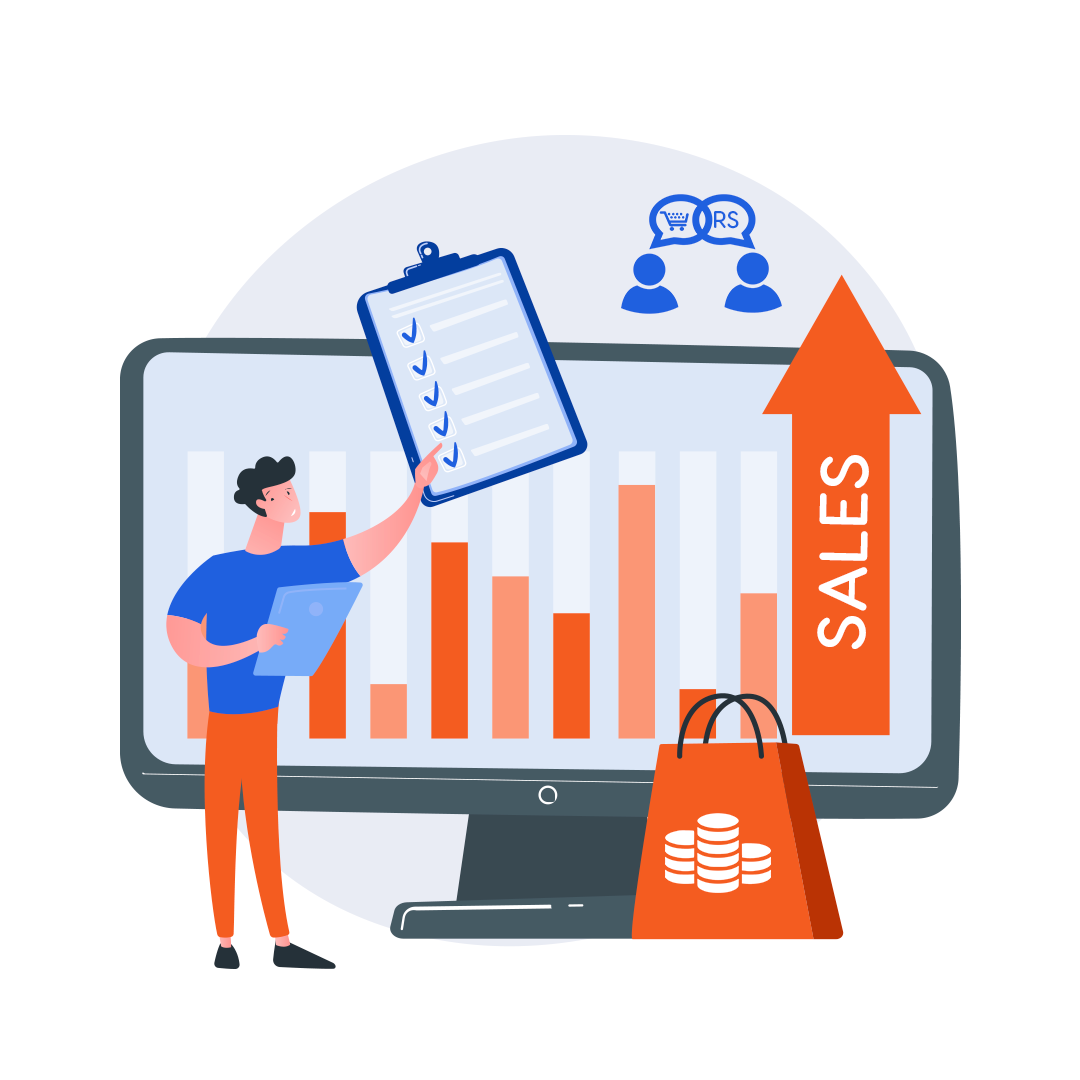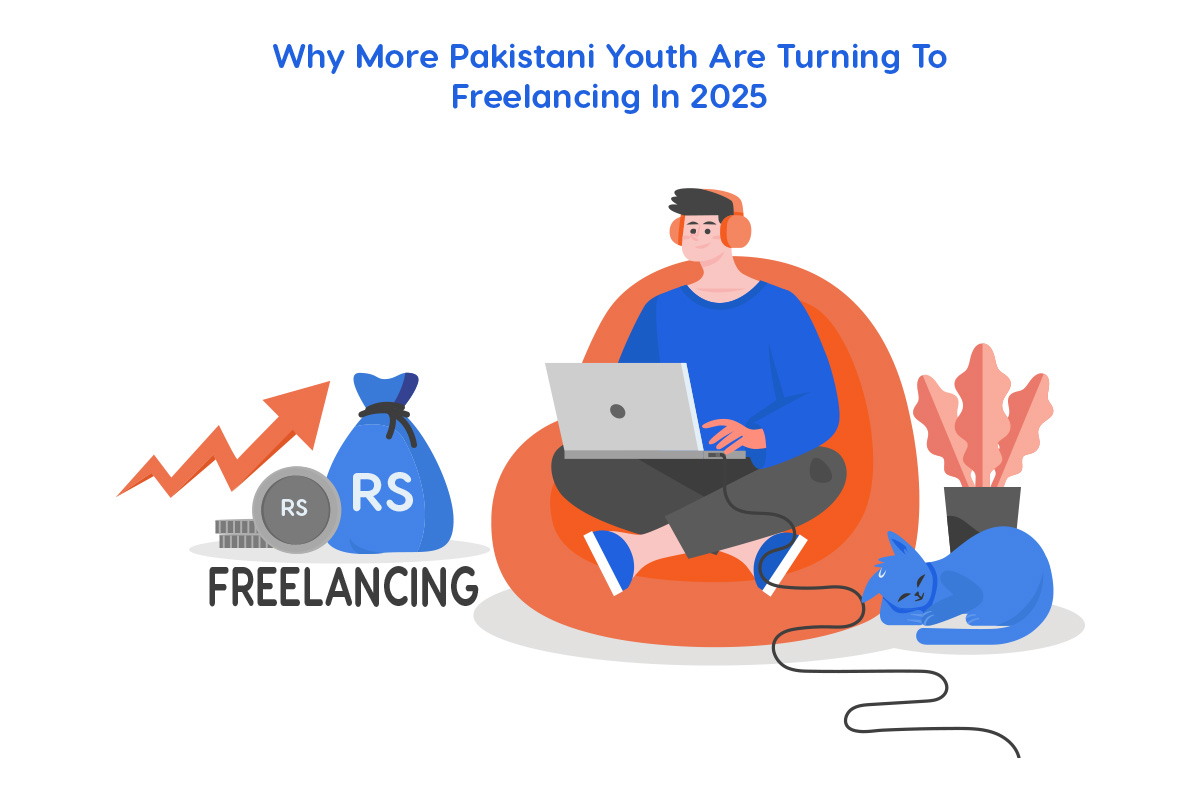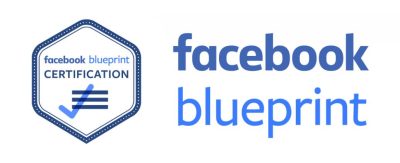E-commerce, a term that means the electronic sale of goods, is a product sold online. The physical effects are sold online. It can also refer to any business deal made possible by the Internet. Ecommerce has benefited independent contractors, small enterprises, and big businesses by allowing them to offer their products and services on a hierarchy that was not feasible with conventional offline Shopping. Ecommerce has proven helpful to companies by enabling them to provide their products and services for high margins. Contacting as many customers as possible at the right time is key to increasing sales.

Types of E-commerce
There are three main types of e-commerce:
- business-to-business (websites such as Shopify)
- business-to-consumer (websites such as Amazon)
- consumer-to-consumer (websites such as eBay)
Status of E-commerce in Pakistan
- With e-commerce sales of $5.9 billion in 2021, Pakistan will be the 37th-largest market after Iran and Israel. The Pakistani eCommerce market grew by 45% in 2021, contributing to the 15% global growth rate.
- The size of the Pakistani e-commerce market increased by more than 35% in the first quarter of the fiscal year 2021 to 96 billion USD from Rs71 billion during the same period last year.
- According to State Bank data, there were 3,003 registered e-commerce merchants in Pakistan in 2020–21, a 76 percent growth from 1,707 in 2019–20. Business-to-consumer (B2C) firms typically dominate e-commerce in Pakistan.
The Top 4 Popular E-commerce & Shopping Websites in 2022
- daraz. pk
- olx.com.pk
- PakWheels
- zameen.com
daraz.pk
They were founded in 2012 as an online fashion shop. It is the first and most popular e-commerce platform in Pakistan. Since then, it has become a typical marketplace for businesses selling electronics, home appliances, and clothing. It includes electronics, home appliances, apparel, cosmetics, health products, and many other items. It is one of these ground-breaking online shopping sites.
Olx.com.pk
Customer-to-customer (C2C) businesses are those in which customers transact. For purposes of OLX, both the buyer and the seller are customers. C2C offers a secured market system to purchase and sell used products and services. Only five months after its introduction, OLX Mall, the top online listings portal in Pakistan, has ended its eCommerce operations. The global leader in classified ads, OLX, created OLX Mall to expand its business and act as an online retailer. According to Sunny Kataria, director of Olx India’s vehicle category, the company currently receives 120,000 new, unique B2C listings monthly. Overall, the platform gets 450,000 individual listings each month. No matter where you are, you may purchase and sell things using the OLX Pakistan smartphone app. Moreover, you may sell your products quickly and swiftly with short load times and a large selection of categories.
PakWheels.
The largest online marketplace in Pakistan for buying and selling cars is PakWheels. It gathers a large number of brand-new, used, and certified pre-owned vehicles from a large number of dealers and individual sellers.PakWheels provides services to assist customers in purchasing, selling, or to research automobiles. The website provides listings for both new and old cars for people wishing to purchase one. In addition, the website offers to sell vehicles with various service levels, including one where website representatives handle many of the details, such as writing the ad, taking photos, and pre-screening potential buyers. Sellers can list cars directly for sale to a buyer on the website, or they can also offer to sell them.
Zameen.com
A Pakistani internet property directory lists real estate brokers, agents, developers, and homes for sale and rent. The business has offices in 30 cities around Pakistan, including Karachi, Lahore, Quetta, Islamabad, Gujranwala, Faisalabad, Peshawar, and Multan, and it conducts business there as well. Zameen.com received over 5 million monthly visitors, with 32.9 million page views across all devices, according to estimates from March 2018. In addition, the platform has 1 million developers, 1,500 registered agents, 14,500 property listings, and 11 million members.
You might also like: The Ultimate Guide to Make Your Online eCommerce Store in Pakistan
Pakistan’s E-commerce Market Cap
Pakistan’s e-commerce sector is rapidly expanding. People are opting for new ways to earn money, such as grocery delivery with a single phone call, automobile repair at your door, or even providing content writing services on freelance websites. All of these ideas necessitate the perfect mind to write the business plan, and as we all know, there are many business plan writers in Pakistan. Then some take advantage of the current situation and create a comprehensive shopping platform where everyone can find items to their liking. However, the e-commerce industry has primarily focused on consumer goods.
Online customers in Pakistan look for and buy consumer electronics, apply for jobs, receive online education and counseling services, and sell/buy and gather information on vehicles, computers, financial services, and many other products and services. In addition, consumer choices and records generate a wealth of data used in targeted advertising. Pakistan’s e-commerce market was expected to exceed $7 billion in 2022 and $9 billion by 2025, indicating that the country was emerging as a promising market for online commerce.
What Does the Future of E-commerce in Pakistan Look like?
Pakistan faces a lot of challenges when it comes to e-commerce, but the future looks promising. This new era will improve its people’s livelihoods, create a competitive enterprise, and increase the country’s share of global trade. Beauty, health, personal, and household care have tremendous potential in the eCommerce sector, followed by beverages, electronics, fashion, food, furniture, and media. The eCommerce market in Asia is expected to reach a US $2,093 billion valuation this year, and Pakistan has significant potential to contribute to this valuation.
Pakistan’s E-commerce Sector’s Potential for Growth
Even though the eCommerce sector is popular in Pakistan, there is still much room for growth. According to one report, Pakistan’s eCommerce sector accounts for less than 1% of the country’s retail market. This demonstrates significant room for growth in Pakistan’s eCommerce sector. Now that Pakistanis have begun to trust digital payments and online Shopping, the time has come to capitalize on this trust and expand the industry. Pakistan’s eCommerce companies should prioritize customer retention while expanding their customer base. Digital marketing is one method of increasing the customer base. Government should do a few things to help eCommerce companies.
Insights
In the end, the eCommerce market will generate approximately $7,666.00 million in revenue by 2022. The payment will grow at a 6.09% annual rate (CAGR 2022-2025) by 2025
Even as regions reopen, e-commerce growth continues to rise. By 2024 Transnational e-commerce sales are expected to hit $5 trillion in 2022 and $6 trillion in. Merchants continue to follow consumer demand online, with record numbers flocking to e-commerce.
Pakistan E-commerce and the Impact of Covid-19
Demand has shifted away from traditional brick-and-mortar retail and toward online Shopping. Pakistan is one of the nations where the e-commerce sector has been seeing steady growth. Registered e-commerce merchants’ numbers have increased dramatically in the past few years. Moreover, the industry experienced new heights of success following the COVID-19 outbreak as individuals began utilizing contactless payment methods.
Since the pandemic Coronavirus epidemic, online trade has seen a significant rise. covid-a9 has impacted Almost all financial and commercial activity worldwide, including Pakistan. Before the pandemic epidemic, consumers used to buy differently. Many businesses grew and created their online storefronts until recently, making the most of their sales through the internet channel. The only choice obtainable to buyers is to shop online.
Final words
Overcoming Pakistan’s e-commerce market is projected to expand further over the coming years. The data indicate that the compound annual growth rate will increase by 18% over the following four years. Comparing this reduction to the 90% yearly growth reveals a market that is only partially saturated. A fairly saturated market is also indicated by Pakistan’s 19% online penetration rate, which means 19% of the country’s residents made an online purchase in the previous year.
E-commerce marketing in Pakistan can be classified into five categories. The largest sector of the e-commerce market in Pakistan, fashion accounts for 68% of all sales. 13% of Electronics & Media, 10% Food & Personal Care, 5% Toys, Hobby & DIY, and 4% Furniture & Appliances make up the total.





